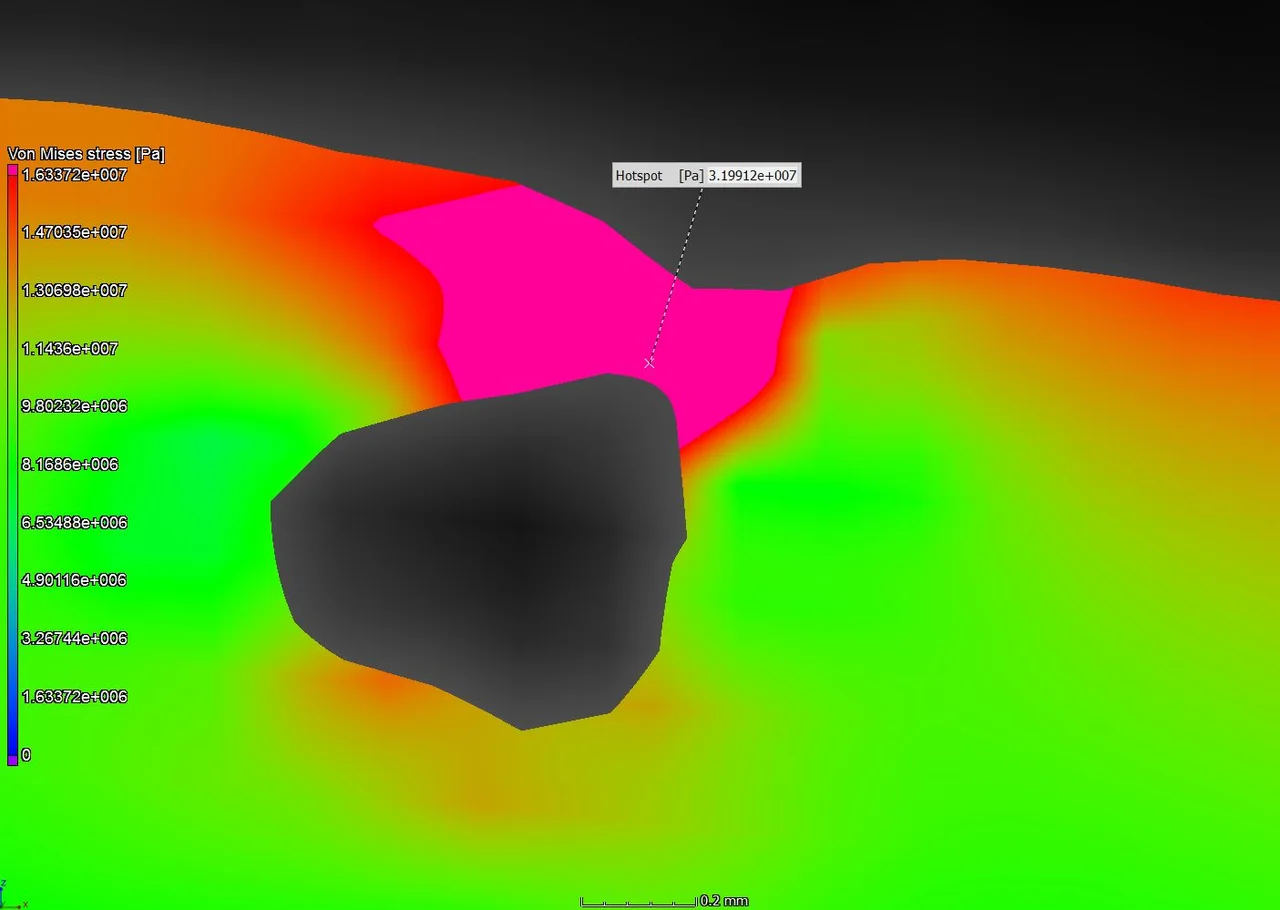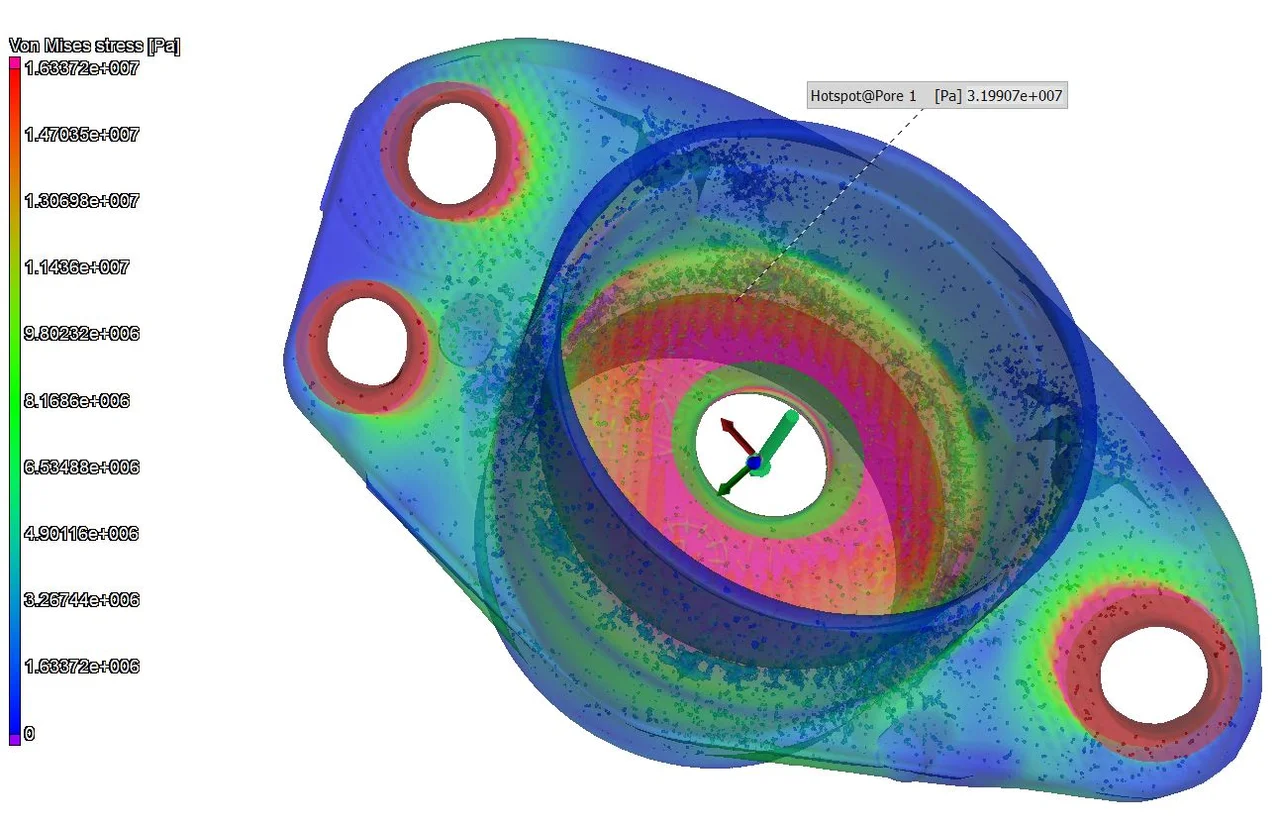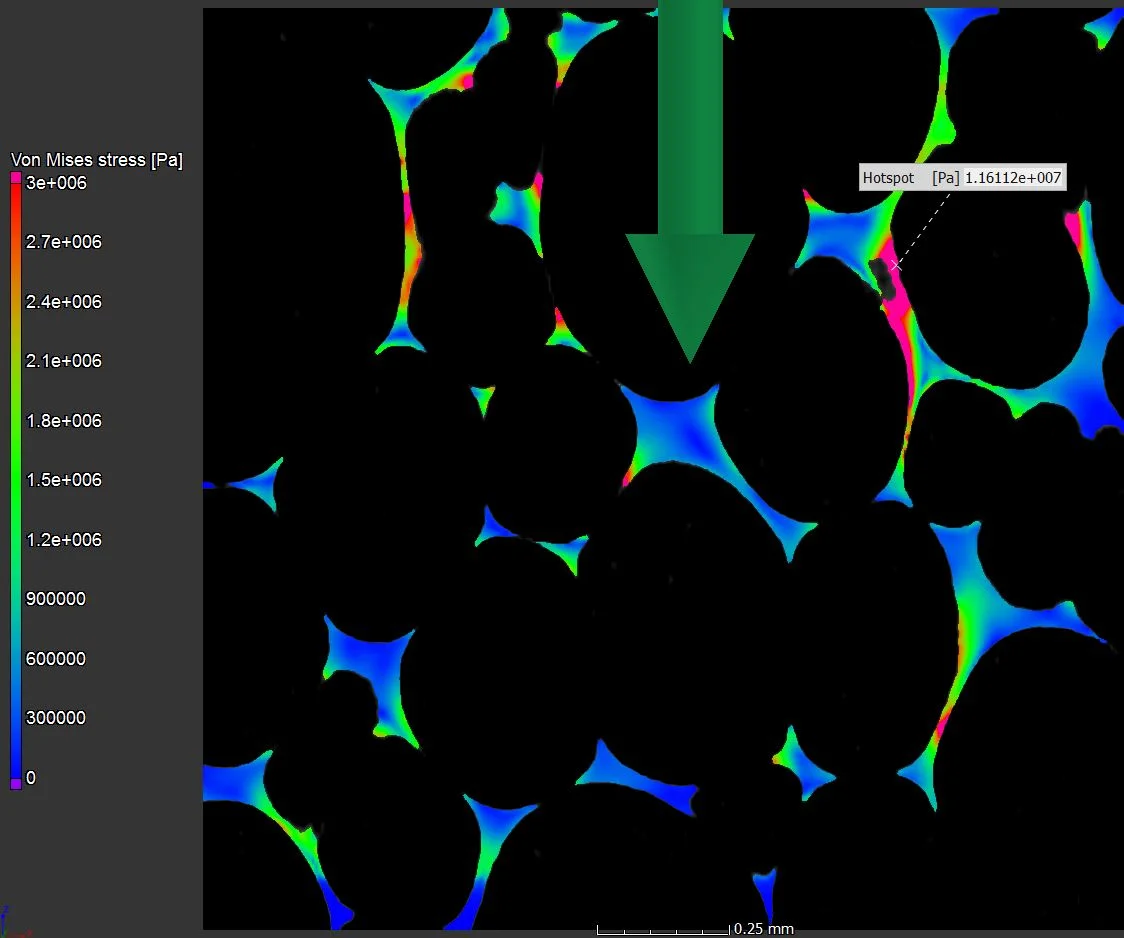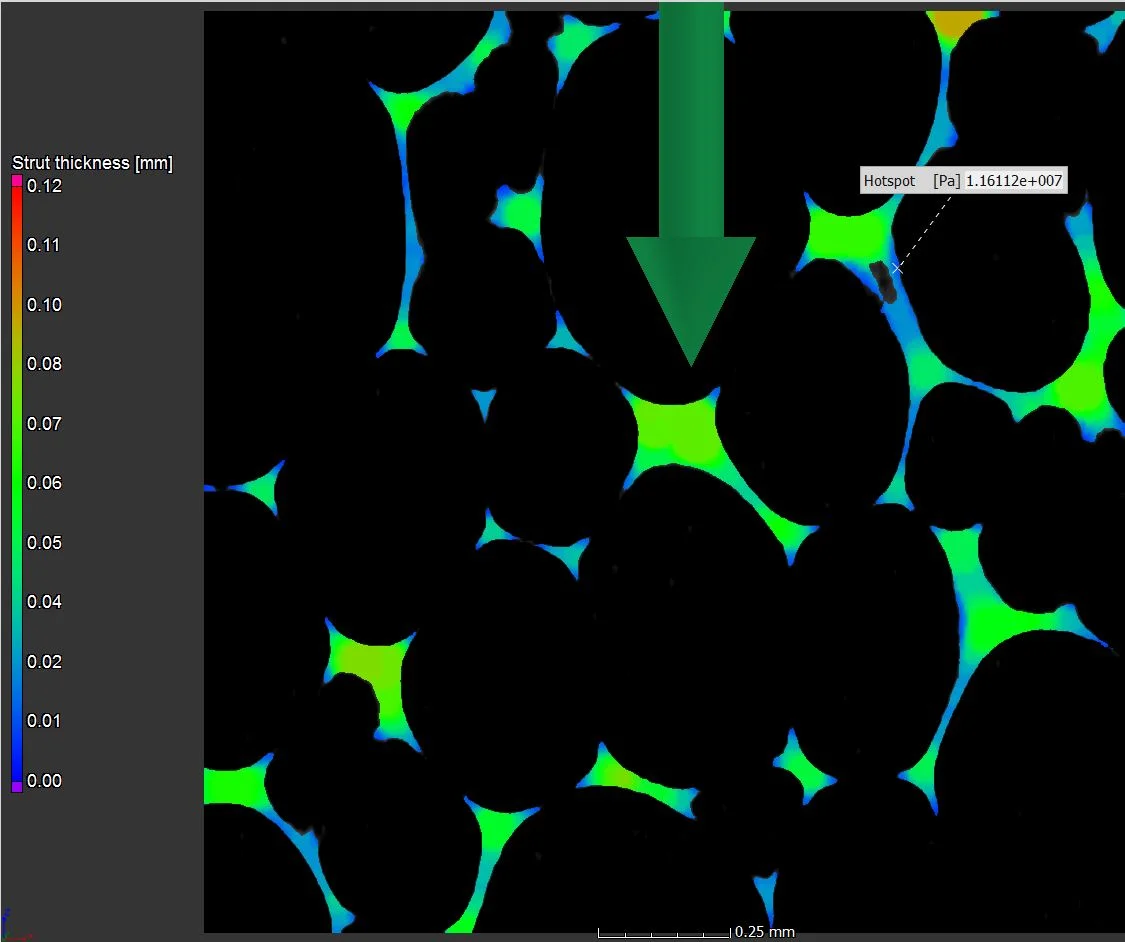This page is not compatible with Internet Explorer.
For security reasons, we recommend that you use an up-to-date browser, such as Microsoft Edge, Google Chrome, Safari, or Mozilla Firefox.
Micromechanics Simulation
Based on CT
Micromechanics Simulation
Simulation of Complex Materials
Lightweight design has led to an increased use of materials with complex microstructures such as porous metals or ceramics, 3D printed lattice structures or metal-metal laminates. As a consequence, there is an increased need for micromechanics simulations to determine their effective mechanical properties.
Simulation of Components with Defects
Lightweight design favors optimized complex component shapes which can only be produced by 3D printing, casting or injection molding. Their mechanical properties may be sensitive to undesired microstructural features such as porosity which are inherent in these production methods. In the absence of easy rules to quantify this sensitivity, computational micromechanics is called for.
The Challenge: To Go Beyond the Limits of Meshing
An application of classical FEM simulation to such microscale simulations would require a geometry conformant mesh with a high number of very small cells in order to represent in detail the complex material structure or the individual pores. The efforts for mesh generation and computation may quickly become prohibitive.
The Volume Graphics Solution: Stress Simulation Directly on CT Scans – No Meshing Required!
Immersed boundary methods help to overcome this meshing problem. The Structural Mechanics Simulation module of VGSTUDIO MAX uses an immersed boundary method implementation for the microscale simulation of stress distributions directly on computed tomography (CT) scans which accurately represent complex material structures and defects.
Volume Graphics gives you a validated solution to perfom realistic micromechanics simulation with low effort:
Low Effort
- No meshing required
- No simulation expertise required
- Seamless workflow in one software — from material segmentation and defect detection to simulation
Realistic
- All microstructural details are captured by a subvoxel-precise material segmentation
- Simulated stresses can be directly related to the underlying material microstructure (e.g. size, location and shape of pores or thicknesses of struts in open-cell foams)
Validated
- Predicted fracture locations and tensile strengths validated in experimental tensile tests of 3D printed components with pores
- Effective elastic properties of a cubic lattice validated against a conventional FEM simulation
Related Products
More Information
- Predicting Failure in Additively Manufactured Parts Using X-Ray Computed Tomography and Simulation (Peer Reviewed Paper, 7th International Conference on Fatigue Design 2017)
- Virtual Stress Tests Directly on CT Scans (Technical Paper, Asia Pacific Conference on Non-Destructive Testing 2017)
- Simulation of the Stress Concentration Around Pores in 3D Printed Components (Presentation, NAFEMS DACH Conference 2018)
- Micromechanics Simulation Directly on CT Scans (Presentation, CAASE18 – The Conference on Advancing Analysis & Simulation in Engineering)
- Digital Engineering interviews Volume Graphics at CAASE 18 (Video)
- Simulation of Material Properties Directly on CT Scans (Presentation, 3DMS – The 4th International Congress on 3D Materials Science 2018)
- Simulation of the Notching Effect of Pores in 3D Printed Components (Technical Paper, CAMX 2018 - The Composites and Advanced Materials Expo)
- Accurate and Efficient Simulation of Real Pore Geometries Directly on CT Images (White Paper)




